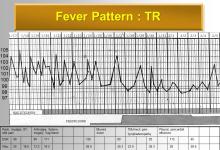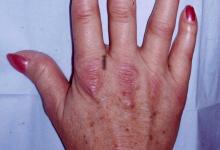Contraception in SLE Save

Pregnancy in SLE gets a lot of press in the rheumatology literature, and deservedly so, since pregnancy risks can be markedly increased. It was not that many years ago that women with SLE were counseled to avoid pregnancy. As recently as 2004, the maternal mortality rate in SLE was 20-fold higher than that of the general population.(1) While recent estimates are much improved (2.5-times the general U.S. average) (2), higher risks for mortality and adverse outcomes persist.
This is why it is critical to discuss contraception with our SLE patients. Pregnancy should be avoided in women with severe damage, active disease, or those receiving treatment with teratogenic medications. SLE patients are advised to plan for pregnancy to optimize both maternal and pregnancy outcomes; when women with SLE become pregnant who are not actively planning for pregnancy, they have higher risks for multiple complications. (3)
When pregnancy is not desired, the use of safe and highly effective contraception is the best way for a woman with SLE who is sexually active to avoid a pregnancy with higher risk for adverse outcomes (or the need to consider termination). Yet women with lupus are less likely to utilize the most effective contraceptive methods (4), relying instead on methods with lower effectiveness (e.g. condoms) or using no method at all.
Chronic illness may be all consuming for both patients and clinicians, and management of complex disease may leave little time or attention for discussion of pregnancy or contraception. Until recently, inconsistent messaging from OB GYNs and rheumatologists may have been a factor as well: until 2024 the U.S. Medical Eligibility Criteria for Contraceptive Use (U.S. MEC) and the 2020 American College of Rheumatology (ACR) guideline for the management of reproductive health in rheumatic and musculoskeletal diseases (5) had differing recommendations for use of progestin contraceptives. Guidelines from these two organizations are now aligned (6), and use of these guidelines can make this discussion simpler.
Highly effective forms of contraception include long-acting reversible contraception (LARC): intrauterine devices (IUDs) and subdermal progestin implants. These are recommended first for all women with SLE regardless of antiphospholipid antibody (aPL) status or level of disease activity. The risk of pregnancy is <1/100 over a year of use, and they do not contain estrogen, a potential issue for some patients. Risk of infection with IUDs is extremely low and is not increased in women on immunosuppressive medications. (7)
Moderately effective methods include hormonal contraceptives, either combined hormonal contraception (CHC) containing estrogen and progestin, or progestin alone (e.g. progesterone-only pill, or POP). Risk of pregnancy after one year of use ranges from 1/10 to 1/20.
Not all SLE patients can safely use estrogen-containing hormonal contraception due to thrombosis and flare concerns. The two important contraindications to use of estrogen-containing contraception for women with SLE are positive aPL and a moderate-high level of disease activity. Standard birth control pills were withheld in the past due to concern for flare risk. In 2005 two randomized controlled trials (8,9) demonstrated no increased flare risk for SLE patients with inactive or mild, stable disease; study medications contained 35 ug ethinyl estradiol and norethindrone. CHC with higher estrogen content or resulting in higher serum estrogen levels (e.g. transdermal patch) have not been studied in women with SLE and risk for flare is unknown.
Most progestin-only contraceptives don’t increase the risk for thrombosis and are safe to use in patients with aPL (or other risk factors); the main exception is subcutaneous or intramuscular depo-medroxyprogesterone acetate (DMPA) (10). In addition to increasing risk for thrombosis, DMPA may also lower bone density by inhibiting ovulation (11): it is not generally recommended for SLE patients.
A relatively new option is an over-the-counter POP containing norgestrel: this provides a moderately effective contraception option without any need for a gynecology exam or monitoring. Like most POPs, it must be taken daily within a three-hour window to be effective. In contrast, a newer (prescription-only) POP containing 4 mg drospironone requires only a 24-hour window. As a spironolactone analog, drospironone should be used with caution in SLE patients with kidney disease as it may increase risk for hyperkalemia. Drospironone is also used in certain CHCs at a lower dose of 3 mg.
Barrier methods of contraception (e.g. condoms) and natural / family planning methods are least effective: pregnancy risk over one year is 1 in 5. Condoms do provide protection against sexually transmitted diseases and use may be encouraged for this reason.
Emergency over-the-counter contraception (oral levonorgestrel) can be used by all SLE patients and should be taken within 72 hours of unprotected intercourse.
Medication interactions are important to consider: women who are taking mycophenolate should ideally use an IUD; if not, two forms of other contraception are suggested due to mycophenolate’s potential to decrease hormonal contraceptive efficacy.
- Clowse ME, Jamison M, Myers E, et al. A national study of the complications of lupus in pregnancy. Am Journal Obstet Gyn. 2008;199(2):127-e1
- Mehta B, Luo Y, Xu J, et al. Trends in maternal and fetal outcomes among pregnant women with systemic lupus erythematosus in the United States: a cross-sectional analysis. Ann Int Med. 2019;171(3):164-71.
- Rajendran A, Eudy AM, Balevic SJ, et al. The importance of pregnancy planning in lupus pregnancies. Lupus. 2021;30(5):741-51.
- DeNoble AE, Hall KS, Xu X,et al. Receipt of prescription contraception by commercially insured women with chronic medical conditions. Obstet & Gyn. 2014;123(6):1213-20.
- Sammaritano LR, Bermas BL, Chakravarty EE, et al. 2020 American College of Rheumatology guideline for the management of reproductive health in rheumatic and musculoskeletal diseases. Arthritis & Rheum. 2020;72(4):529-56.
- Nguyen AT. US medical eligibility criteria for contraceptive use, 2024. MMWR. Recommendations and Reports. 2024;73.
- Shah KN, Choudhary SD, Mishra VV, et al. Contraception: What to Use after a Solid-Organ Transplant? Advances in Human Biology. 2021;11(Suppl 1):S13-7.
- Petri M, Kim MY, Kalunian KC, et al. Combined oral contraceptives in women with systemic lupus erythematosus. NEJM. 2005;353(24):2550-8.
- Sánchez-Guerrero J, Uribe AG, Jiménez-Santana L, et al. A trial of contraceptive methods in women with systemic lupus erythematosus. NEJM. 2005;353(24):2539-49.)
- Stam-Slob MC, Lambalk CB, van de Ree MA. Contraceptive and hormonal treatment options for women with history of venous thromboembolism. BMJ. 2015;351:h4847.
- Cundy T, Evans M, Roberts H, et al. Bone density in women receiving depot medroxyprogesterone acetate for contraception. BMJ.1991;303(6793):13-6.
Join The Discussion
Lisa: This was incredibly well-written, packed with practical advice, interesting information, and appropriate references that are not always easily found (eg letting us know the dose of CHC's shown not to flare SLE; historical context of 20X increased mortality, Opill availability, MMF hormonal interference, GYN abbreviations we are unfamiliar with, etc). Thanks for taking the time.










If you are a health practitioner, you may Login/Register to comment.
Due to the nature of these comment forums, only health practitioners are allowed to comment at this time.